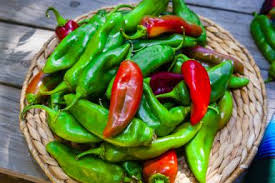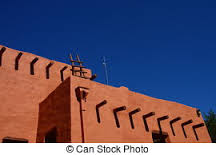Having been through the trials of 2021 with the rest of you I am in need of hope and comfort. In normal times, at the beginning of a new year I would visit a Pueblo feast day, where the sight of the dancers, the sound of the drums, the smell of the pinon fires and the taste of the red chili stew would give me all I yearned for. Covid has made that impossible, and much as I miss the experience, the Pueblo people are, of course, suffering most from the loss of this crucial cultural practice. I know they have ways of keeping the thread in tact and trust that in coming years we will be able to return to the feast days. As a way of virtually offering the experience, I am re-posting my entry from January 2017, another moment when hope and comfort were badly needed.
***********************************************************************
January 31, 2017, Always Was and Always Will Be
If you are lucky enough to be a New Mexican you will probably grasp this immediately. If you are from elsewhere and have never had the chance to spend a few hours at a Pueblo feast day, let me introduce you to something very special.
Pueblo culture and religion run deep. In New Mexico, each of the pueblos has certain days of the year they celebrate. It may be to honor a patron saint, a time of harvest, or something that we non-pueblos don’t need to know about. A feast day includes traditional dancing in the morning and afternoon with a break in the middle when the dancers and cultural leaders retreat to the kiva and observers retreat to someone’s house for one of the best meals you will ever have. I find myself reluctant to say more for fear that hordes from around the country will come flocking and ruin the experience.
But actually that can’t happen. Because whatever happens in the outside world makes no difference on feast day. The dances are the dances, the same as they were 100 or 1,000 years ago. The hospitality and generosity are unchanged. The meals today may include jello and cupcakes with pink frosting, but the beans, the corn, the squash, the green chile and red chile stews, and the oven bread are all the same.
There have been periods in the past, where invaders forced pueblo people to move for protection to high mesa tops, or to hide in canyons far from home. And there have been “episodes” in more modern times where guests have acted badly, broken rules, taken photos or made recordings, and the pueblo has closed its ceremonies to outsiders for a few years. But no matter where they are or what the circumstances the pueblos continue to dance and pray for all living things.
Recently we went to two feast days – a King’s Day celebration at Isleta Pueblo south of Albuquerque on a Sunday, and the next day a deer dance at San Ildefonso Pueblo north of Santa Fe. We had friends at each pueblo so we were guaranteed full and happy stomachs. But we took away so much more. As we listened to the drumming and chanting and watched the dancers, from toddlers to great grandmas and grandpas, I was struck by the fact that this community had been honoring this day in this way for hundreds of years before I was standing there, and that they would be dancing the same dance to the same drumming hundreds of years from now.
Of course things change and probably a key to the survival of this culture is the ability to absorb the jello and pink frosting (and kale salad and broccoli buds, by the way) and continue on. The cultures have survived because of their ability to be flexible where it doesn’t matter and hold the line where it is important. The ritual is the same, the details different. Some costumes may have ribbons or sequins among the shells and feathers, and there may be Velcro hidden here and there. But the fundamental core is there, unchanged and as persistent as the drumming. All generations are participating; some dancing, some cooking, some bringing food to distribute to the dancers and their families, some watching in lawn chairs.
I took great comfort as I stood and watched the dances. The clear blue sky framed the adobe-brown buildings of the pueblo. The sound of the drums and the voices of the singers, guided the soft shuffling of moccasins on the hard-packed dirt. The dancers, whether four years old or ninety four years old, had the same expressions — calm and focused, somehow in the past, the present and the future all at the same time. The smell of fires and simmering stews, and the feel of the winter air, briefly warm and then turning crisp as the sun dropped toward the horizon — all of this was as it had always been and always will be. I was grateful to be there on those two days, a guest in a culture that survives with grace and persistence, rising above whatever may be happening elsewhere, digging deep and continuing on.



Wonderful piece Lucy. You describe things so well. Gives me comfort just to read it, and easily takes me back to my feast day visits. Thank you.
Yes, hopefully those visits are in our future. Hope you are well, and that 2022 is kind to you.
Heritage is everything.
Thanks, Karl. Agree.
We terribly miss welcoming the New Year at Santo Domingo/Kewa for all the reasons you describe.
Us too! Hope you two are well and staying busy, and that we can find hope in the coming year.
Excellent description of the “feel” of Pueblo festivals even from an outsider’s point of view. I forwarded it to friends who are enjoying the “Yellowstone” series on TV, which touches on the conflict between Anglo and traditional Native American cultures. Thanks for your site. Always enjoy opening your pieces.
Thank you so much. Really appreciate the comment. And I will look for Yellowstone — wasn’t aware of it.
Comforting and relaxing words. Have a great 2022.
Thanks, Larry, and good new years wishes to you, too.
from Ella Natonabah Jones (posted by Lucy because captcha wasn’t cooperating)
“Always Was and Always Will Be…..”
Love the quote, Lucy. Thank you for this heart-warming descriptions of the pueblo traditions and feasts. You took me back right into the sceneries of past feast day visits (52+ years!) We miss the feast days and visiting the pueblos and friends who reside in those pueblos ….. but have optimism for 2022, we just have to.
I am forwarding your story to our friends in Norway who have lived here in the early 1970s and some of them still come to New Mexico for visits. I know they will appreciate your story.
Nózhǫ́ǫgo Nińdoohah
Happy New Year
Echoing what others have said, this post took me back to all of the dances and ceremonies I’ve ever attended and reminded me of those experiences. I can hear bells and rattles and clacking and rhythmic chanting and I get that feeling of falling into a parallel universe, separate but connected to the one where I live almost all of the time. The continuation of these practices and the celebration of these cultures gives me great hope for the future. They’ve survived and thrived through great calamities and social upheaval in my universe, and as you so wonderfully point out, they’ll survive what feels like a crisis of this moment, too. Thank you for this ray of hope on the first day of a new year!
So beautifully said, Kay! thank you.
Dear Lucy,
Thank You. Thank You. Returning to Southern Arizona after a bleak December and Christmas at home in Galisteo, your blog points out what was desperately missing about my Christmas 2021– my traditiional Pueblo visit. My new friend from Santa Clara and I did not see one another. The Pueblo is closed and COVID is too big of a risk for coffee and an enchilada at El Paraguas/Parasol/The Road Runner Cafe. I so miss the drums and the soft steps dancing on mother Earth.
Jan
So good to hear from you, Jan, and glad the post resonates.
Thank you for this story today—the sights and sounds, tastes and smells. And for this survival tip: “To be flexible where it doesn’t matter and to hold the line where it is important.”
Grant us all the wisdom to know the difference.
Happy new year, Dear Lucy.
Thanks so much, Amy, for pulling out the nugget! Look forward to connecting, at least on the screen, in 2022.
Your essay offers a deeper “virtual” visit than any new technology can provide. With your writing, I was “there,” with the blue skies and sound of dancers’ shuffling moccasins, even though this morning I’m watching the misty rain cloak my view of Mount Rainier. Thank you for the journey in to “always”. I hope to experience it “in real” next year.
So glad I took you somewhere you enjoyed. I know the misty rain and Mount Rainier well, Seattle born and bred, and love that image, too.